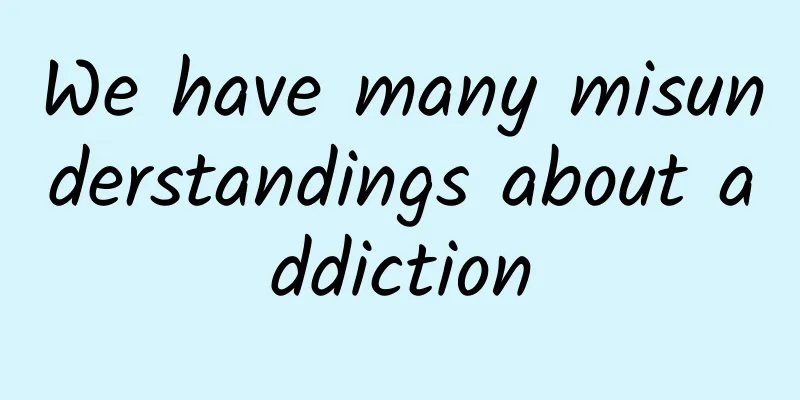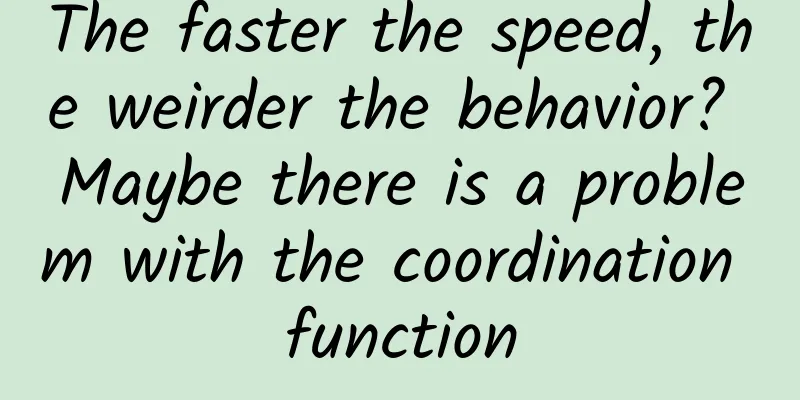We have many misunderstandings about addiction

|
In today's society, addiction is actually more common than we think. What is the physiological basis of addiction? The parts of the brain that process happiness and pain are in the same area. In the eyes of the author of "Addiction", happiness and pain are like a scale here, which is a metaphor for the tolerance of the dopamine system. When the dopamine concentration is too high for a long time, the number of dopamine receptors will decrease, thereby weakening the effect of each unit of dopamine. In other words, we need more stimulation to increase pleasure. And this process will tilt towards pain. Over time, the tolerance to pain has also become lower. On the other hand, technological development is also a factor that contributes to addiction. In the face of various temptations, it is difficult for us to remain immune. Written by Chen Ruidong Addiction means repeatedly doing something that you know is harmful to you. Anna Lembke, the author of Addiction, is the director of the Stanford Addiction Medicine Dual Diagnosis Clinic. She observed the frequent addiction problems in modern society from a doctor's perspective, and also discussed her addiction process of reading romance novels in the book. I also reflected on my own addictive behaviors, one of which was buying games. I loved playing Nintendo when I was in school. I wanted to play all the fun games, but because I was a student, I tried every way to save money. In order to spend the least money to play the most and the best games, I often refreshed the store discount pages and review websites, and bought the games that were discounted and well-received. Unknowingly, I spent 10% of my annual income on games. I actually knew that I would not play, but I still couldn't resist the temptation to buy more games, which undoubtedly fell into the category of addiction. It's a bit ironic to think that my research topic at the time was the operating mechanism of the dopamine system in motor learning, and the behavior of constantly buying discounted games fits the working principle of the dopamine system very well. Since both the author who specializes in treating addiction and I who specializes in studying the dopamine system have encountered addiction problems, I think addiction should be a fairly widespread phenomenon. This is also a revelation of this book: addiction is more common than we think. Addiction is not limited to drug abuse. With the development of science and technology and economy, addiction is becoming more and more common. Psychological diseases such as depression and anxiety have become prominent in modern society, especially in developed economies. "Addiction" cites many cases and data to illustrate this phenomenon. In North America, the most developed region in the world, cases of depression increased by 50% from 1970 to 2017. 34% of Americans said they often felt physical pain, while only 19% in China. In the first decade of the 21st century, prescriptions for opioids (painkillers) in the United States grew exponentially. Influenced by pharmaceutical companies and insurance companies, doctors are increasingly prescribing such prescription drugs, resulting in rising addiction rates and mortality rates. In 2016, Lembke published the book "Drug Dealer, MD", becoming the first person in the medical community to warn about the dangers of prescription opioids. In "Addiction", she gave two explanations for the phenomenon of addiction and a series of suggestions on how to deal with addiction. According to modern biomedical research, the root of addiction is the overactivation of the dopamine system in the brain. Dopamine is a neuromodulator in the human brain, widely released by a small group of neurons deep in the brain. Of all the substances that act on the nervous system, dopamine is the most well-known. From time to time, there are headlines such as "Dopamine Withdrawal" and "Passion is Dopamine, Love is Endorphins" in the media. (Every time I see such headlines, I feel a headache and tiredness.) Perhaps it is precisely because of its widespread dissemination that the public has a wide range of misunderstandings about it. The most common misunderstanding is to equate dopamine with happiness, and even to believe that dopamine withdrawal can achieve happiness (dopamine is indispensable for the normal operation of the human brain, and Parkinson's disease is the consequence of dopamine cell withering). The author clearly explains in the book that the main function of dopamine is not happiness, but as a reward signal, it promotes "wanting", and emphasizes the difference between "wanting" and "liking". I am particularly greedy for oranges ("wanting"), and the pleasure I get when I eat oranges ("liking") are two signals represented separately in the brain. Dopamine is only strongly associated with the former, which explains why many addictive behaviors involve a desire to do something, but the pleasure you get from doing it decreases over time. In fact, the processes involved in dopamine are not limited to reward-seeking behaviors. For example, I found that the dopamine system is involved in motor learning processes without external rewards, such as reporting whether a bird is out of tune when singing. Naoshige Uchida of Harvard University found that certain dopamine releases can prompt animals to avoid possible dangerous factors in the environment. I once asked Professor Uchida what he thought of the popular science books on dopamine on the market, and he told me an interesting experience: his high school daughter needed to answer the function of dopamine in a class test, and his daughter naturally asked her father who specialized in dopamine. However, this is a question he is still working on. Although there are standard answers to high school tests, he doesn't know what the correct answer is. This is the case for many front-line researchers: the data we face does not allow us to give a concise answer, but people expect such an answer. This is our disadvantage in communicating science: if we give empirical answers according to scientific norms, the answers are often too complicated and full of uncertainty. Although "Addiction" has some shortcomings in scientific facts, such as ignoring the above-mentioned dopamine-related research when discussing dangers, and mistaking blood dopamine content for brain content, it is still a useful popular science that meets the needs of more people and allows us to escape the curse of knowledge. The dopamine system, like many neural connections in the brain, has the characteristic of tolerance. This is similar to Le Chatelier's principle in chemistry. The author uses the metaphor of a pleasure-pain balance to illustrate the tolerance mechanism of the nervous system. It happens that the areas in the brain that process pleasure and pain overlap, and the body's homeostasis mechanism keeps it balanced. Although this balance does not really exist, it helps to understand the ubiquitous tolerance mechanism of the nervous system. When dopamine concentrations are too high for a long time, the number of dopamine receptors will decrease, thereby weakening the effect of each unit of dopamine. This is also the neural basis of most addictive behaviors: repeating the same behavior can continuously generate reward signals, but because of tolerance, larger and larger doses are required to produce the same reward signal. The author's thoughts on pain are inspired by her research on opioid painkillers. She believes that avoiding pain often causes more pain because the pleasure-pain balance tilts more toward pain. In this crisis, what is more important than the dopamine system is that painkillers cause tolerance to pain-relieving neural pathways. This idea is very suitable for explaining the painkiller crisis facing the United States, but can it be generalized to other scenarios? I doubt that any type of pain can be balanced with any type of pleasure. Nevertheless, the author's thoughts on the relationship between pleasure and pain are still worth reading. In particular, in Chapter 7, the author mentions that the pursuit of pain, such as soaking in cold water, can also lead to addiction. This example shows that replacing one simple behavior with another, even from pursuing pleasure to pursuing pain, is easy to fall into a vicious cycle of dopamine tolerance. But the author repeats a common misunderstanding here: soaking in cold water increases the dopamine content in people's blood, and uses this to argue that pain can increase the release of dopamine in the brain. This argument is invalid because dopamine cannot cross the blood-brain barrier. Dopamine in the blood regulates blood pressure, but does not act on the nervous system. The dopamine measured by blood draw is different from the dopamine content in the brain. Whether taking or injecting dopamine, it will not affect the dopamine content in the brain. Regarding the relationship between pain and happiness, you can also refer to psychologist Paul Bloom's book "The Sweet Spot: The Pleasures of Suffering and the Search for Meaning". People often pursue activities that bring pain. The psychological principles behind these phenomena are far more than just dopamine or the balance of several neurotransmitters. In addition to the biological basis of addiction, addiction in modern society is also related to the operating logic of capitalism. The dopamine system is a genetically determined human physiological structure, which has not changed significantly since ancient times. However, the phenomenon of addiction has undergone significant changes in recent decades. This is due to the development of capitalism. The author cites the concept of limbic capitalism, which was expounded by David Courtwight, a professor of history at the University of North Florida, in his book The Age of Addiction. The limbic system in the brain includes some structures in the medial and subcortical cortex, which undertake more "animal" functions (not "limbic") such as emotions, rewards, and memory. This classification is somewhat vague in neuroscience, but when the relevant concepts are transferred to historical society, Courtwight clarified its meaning: controlling people's emotions and reward mechanisms, that is, controlling your brain's limbic system, can effectively change consumer behavior; and the logic of capitalism and the new technologies brought about by it have led businesses to produce more addictive drugs and other products, and they will continue to pursue addiction to more people in order to achieve higher profits. The movie "The Social Network" depicts how modern social networking services such as Facebook predict and model users' every move, and use reward theory to drive users to become addicted to using social networks, so as to place precisely targeted advertisements to make profits. The fast food industry takes advantage of the naturally addictive nature of sugar; modern cigarettes and brewing technology can distribute more tobacco and alcohol on a larger scale. In the absence of government regulation or active resistance from users, this phenomenon is likely to continue to worsen. Therefore, understanding the biological basis and social context of addiction is crucial to developing effective policies and individual behaviors to resist addiction. As a doctor who has been treating patients with various addiction problems for many years, Lembke describes in detail the eight steps to treat addiction in the book. She abbreviated this therapy as "DOPAMINE" (i.e. dopamine, each letter is a stage). This is a summary of many years of experience of a world-leading professional addiction treatment physician, which has practical significance. It should be emphasized that these methods are not suitable for everyone. If there are serious addiction problems, professional treatment should be sought. The last two chapters of the book advocate honestly facing the facts and reasons of one's addiction, as well as maintaining good social relationships that can supervise bad behavior. This may be a cliché, but the author provides very convincing specific cases to illustrate why these traditional experiences are correct. Regarding radical honesty (complete honesty, no lies), the author mentions an interesting neuroscience perspective. Because lying is often instinctive, telling the truth requires higher prefrontal activity to inhibit lying. Therefore, long-term radical honesty training can enhance self-control, including resistance to drugs or other temptations. When discussing social relationships, the author uses "adaptive" dopamine release to explain why intimate relationships are different from addictive activities, which I think is unfounded. We only know that intimate relationships have rewarding characteristics and are not addictive. But no one has measured dopamine release in intimate relationships. More importantly, the author does not need to introduce this speculation to support her argument. We only need to draw the conclusion that intimate relationships are good for health based on the facts at the psychological level, regardless of the actual state of dopamine release, it will not change this conclusion. The title the author chose for the final chapter is "The Way of Balance". This fits the metaphor of the scales that runs throughout the book, but the last suggestion is more profound than maintaining balance: immerse yourself in life, refuse to escape, and choose to face it. People fall into addiction because the pressure of reality makes us want to escape through short-term enjoyment, and there are many opportunities for enjoyment: alcohol, nicotine, social media, online pornography, video games, etc. These escapist activities give us short-term happiness, but the escape itself will exacerbate the original problem. The right solution is to focus on meaningful things. Chen Ruidong March 25, 2023 About the Author Anna Lembke is a professor of psychiatry and addiction medicine at Stanford University School of Medicine and director of the Stanford Addiction Medicine Dual Diagnosis Clinic. She has published more than 100 articles in journals such as the New England Journal of Medicine and the Journal of the American Medical Association. Lembke was also one of the first people in the American medical community to sound the alarm on the abuse of opioids, and published the popular books Addiction and Drug Dealer, MD. Special Tips 1. Go to the "Featured Column" at the bottom of the menu of the "Fanpu" WeChat public account to read a series of popular science articles on different topics. 2. Fanpu provides a function to search articles by month. Follow the official account and reply with the four-digit year + month, such as "1903", to get the article index for March 2019, and so on. Copyright statement: Personal forwarding is welcome. Any form of media or organization is not allowed to reprint or excerpt without authorization. For reprint authorization, please contact the backstage of the "Fanpu" WeChat public account. |
<<: Is it appropriate to eat wild vegetables in spring? Don’t pick wild vegetables on the roadside
>>: “Crying” can cure diseases! ? It sounds outrageous, but...
Recommend
Apple's Spring Conference: We Can't See What We Really Want
Someone has said that if you love a brand, you sh...
I will teach you the principle of "Water Splash Disappearance Technique". It depends on you how much you can understand.
Audit expert: Luo Huiqian Researcher at the Insti...
The red signals on women's faces should not be ignored! Why do "menstrual acne" recur?
Menstruation will accompany women for most of the...
Understand the Activity startup process and efficient collaboration from startActivity to ATMS
In the Android system, to start an Activity, whet...
The Quotes of Steve Jobs You Haven't Heard of - Another Steve Jobs
[[125806]] Deciding what not to do is just as imp...
Do I need a business license to register Blue V on Douyin? What is required for Blue V certification?
Douyin is very popular now and has a large amount...
What can we find from the pig's nose digging the ground? They invented the predecessor of the mask
Under the epidemic, masks have become a necessity...
The second issue of the Aiti Tribe live broadcast class: How to make good use of HTML5 in mobile Internet products?
[51CTO.com original article] 51CTO and APICloud h...
How to create a screen-sweeping event promotion and marketing?
Review of the Phenomenon-level Screen Sweeping Ju...
Which is more powerful, a black hole or a wormhole? What do they have in common and what are the differences?
They both seem to be holes, but they are two diff...
Dismantle the virtual resource project operated through Baidu bidding. Mom can also operate it at home and earn 15,000 yuan a month
I have been operating this project for more than ...
Dong Changzheng: Changes in users make Toyota "unorthodox"
From June 5th to 6th, the 2018 (9th) Global Aut...
These strange "pretenders" around us are actually very useful
The weather is getting cooler, and it is a good t...
Is it expensive to customize the Suihua beauty mini program? Suihua Beauty Mini Program Customization Cost and Process
WeChat Mini Program is an application that users ...
SEM account performance is not good? 80% of the time it’s because you’re thinking wrongly!
After reading this article, I hope you can improv...









